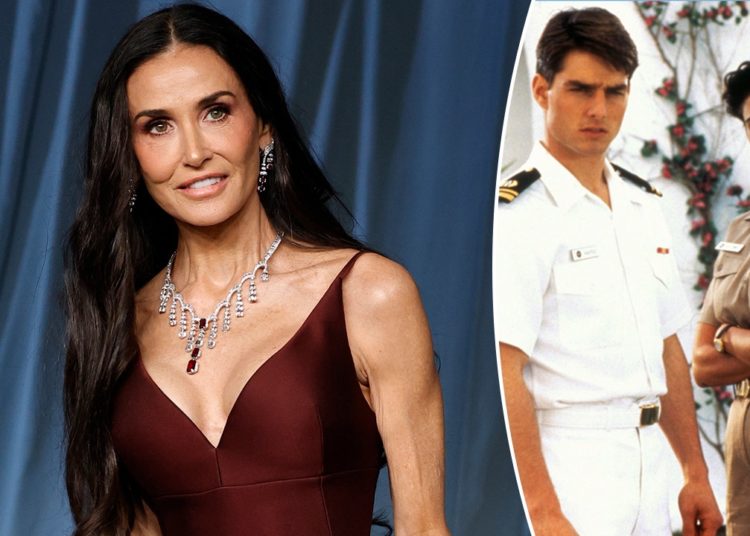There’s a good chance that a horror movie will be nominated for the 2025 best picture Oscar.
And if Ryan Coogler’s “Sinners” or Guillermo del Toro’s “Frankenstein” make the cut, it will be the first time in the Academy Awards’ 97-year history that a fright film has been nominated in consecutive contests.
It’s long overdue. And if you believe part of Oscars’ purpose is to promote the industry and celebrate its achievements, there’s no better time for the academy to get over its traditional disdain for cinematic monstrosities.
As most other sectors of Hollywood’s film business look precarious — adult dramas, the traditional awards season ponies, are dropping like dead horses at the box office, while attendance for the once-mighty superhero supergenre continues to disappoint — horror has hit its highest annual gross of all time, $1.2 billion, with a good two months left to go.
“Sinners,” released in April, remains in fifth place on the domestic box office chart with $279 million. Its fellow Warner Bros. offerings “The Conjuring: Last Rites,” “Weapons” and “Final Destination: Bloodlines” occupied slots 12 through 14 as of mid-October.
“Horror has been, historically, the Rodney Dangerfield of genres,” notes Paul Dergarabedian, head of marketplace trends for global media measurement firm Comscore. “It can’t get no respect.
“But horror is very important to the industry on so many levels now,” he continues. “We have four horror movies in the top 15 this year, all of those generating over $100 million in domestic box office. And to make a significant scary horror movie, you don’t have to break the bank. Look at [‘Weapons’ filmmaker Zach Cregger’s 2022 breakout feature] ‘Barbarian’; half of that was shot in a basement.” Similarly, compare “Sinners’” $90 million price tag to “Black Panther’s” $200 million.
Horror’s popularity has gone in cycles since Universal’s run of classic monster movies in the early 1930s. But profitability has been a reliable bet more often than not — and Karloff’s “Frankenstein” and Lugosi’s “Dracula” still resonate through pop culture while most best picture winners of the same era are forgotten.
Still, it wasn’t until 1974 that “The Exorcist” received the first best picture nomination for a horror film, and ahead of the success of “The Substance” at the 2025 Oscar nominations the genre’s fortunes had only marginally improved. Indeed, many of the titles usually cited as a mark of horror’s growing foothold in awards season — “Jaws,” “The Sixth Sense,” “Black Swan,” 1991 winner “The Silence of the Lambs” — are arguably better characterized as something else entirely, or at best as hybrids. (To wit, the sole monster movie that’s won best picture, Del Toro’s 2017 “The Shape of Water,” is primarily considered a romantic fantasy.)
Fright films’ reputation for delivering cheap thrills to undiscerning audiences was often deserved, but there were always stellar horror films that the academy overlooked. And more recently, films such as “The Substance,” “Sinners” and Jordan Peele’s 2017 nominee “Get Out” have pierced ingrained voter prejudices against the genre by adding social commentary and undeniable aesthetic quality without compromising gory fundamentals.
“The horror genre really does seem to be attracting great directors who are immersed in it, have a real auteur point-of-view and make interesting movies that have horror elements but explore other themes as well,” notes The Envelope’s awards columnist, Glenn Whipp. “‘Sinners’ is Ryan Coogler’s vampire movie, but it’s also about the Jim Crow South and American blues music. How can you resist that if you’re an academy voter?”
And with horror packing in filmgoers like no other genre, high-profile nominations could help the Academy Awards broadcast attract the bigger ratings its stakeholders have been desperately seeking at least since “The Dark Knight” failed to make the best picture cut in 2008.
“That was the whole reason we went to 10 potential nominees,” Dergarabedian recalls. “We wanted to have more blockbuster representation at the Oscars. This may be the perfect storm. If I were an academy voter, I would vote for ‘Sinners’ and ‘Weapons.’ I don’t think that’s an overstatement, given the films that have come out this year.”
Even beyond this “perfect storm,” though, Whipp sees a sea change afoot.
“Everything’s an Oscar movie now if it’s well made,” he says. “Studios aren’t really making traditional, grown-up dramas and the academy can only nominate what’s in front of them. Horror is being produced at a rate that is greater than it used to be, and at least two of these Warner movies really landed with audiences and critics. The genre is attracting some of our top filmmakers right now, and that’s something that will trickle down to the Oscars.”
“This is not a blip,” Dergerabedian concludes. “It’s a trend that feels like it’s happened overnight but it’s been a long time coming. Back in 2017 we had our first $1-billion-plus horror movie box office. If they stop making good horror movies it might be a blip, but I think Hollywood should take this and bloody run with it.”
The post A box-office behemoth, horror finally has Oscar voters’ attention appeared first on Los Angeles Times.




